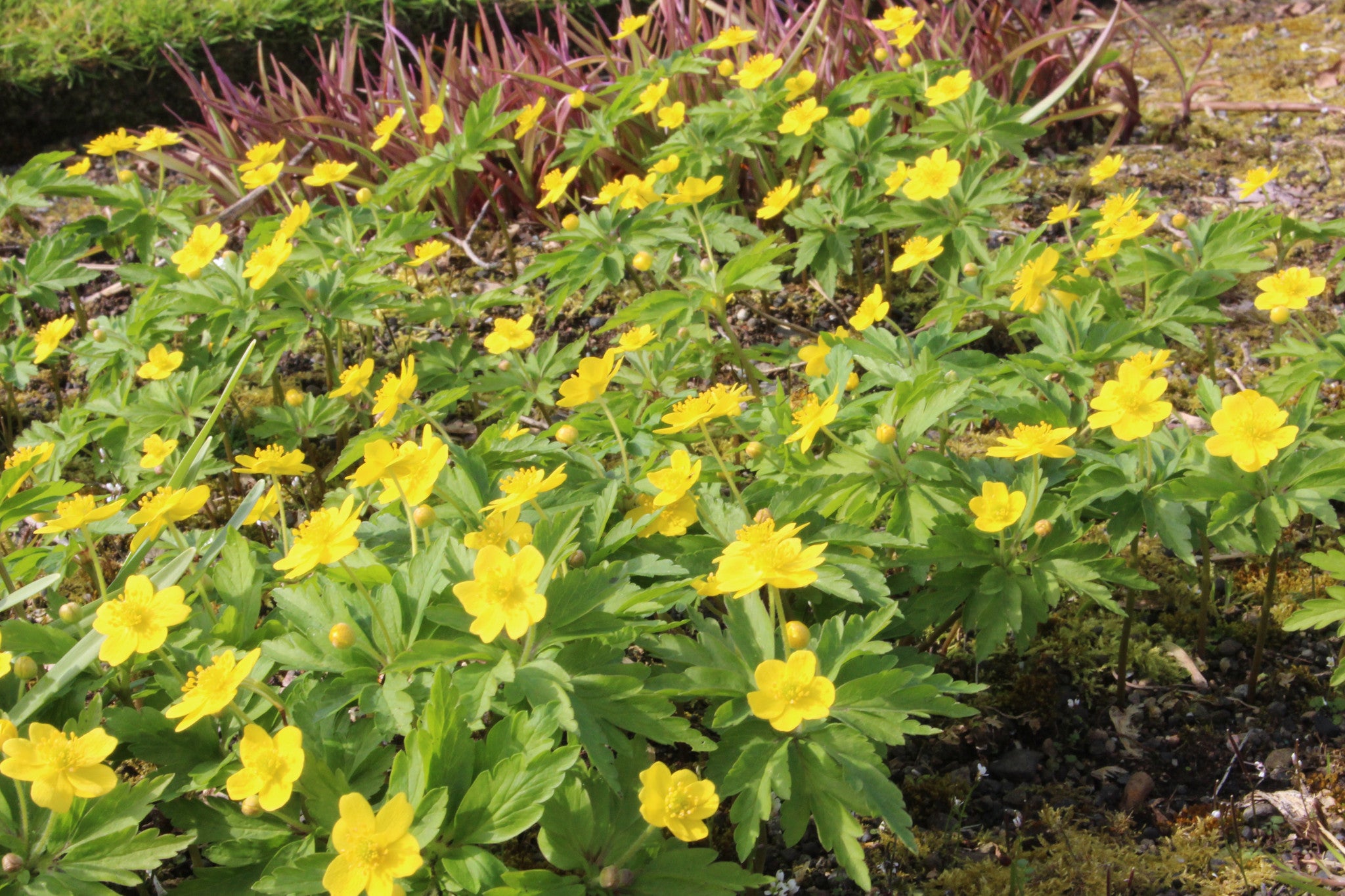Anemone ranunculoides
Approx. 0.5 litre pot
About this cultivar:
Anemone ranunculoides is an absolutely gorgeous yellow anemone commonly know as wood ginger. In 1993 it received the Award of Garden Merit by the Royal Horticultural Society, It forms a tight low mat of ferny leaves. At the center of each leaf it produces a bright yellow flower, resulting in a very showy display. Despite forming a mat is it also grown as a rock garden or alpine plant.
Anemone ranunculoides can grow in fairly dry soil conditions making it ideal for planting under trees. On such a site the plant will go dormant in summer. If grown in wetter conditions, the leaves will remain green all summer. The rhizomes are slow growing but tough - a little rhizome will eventually go a long way.
If my botanical latin is correct the epithet "ranunculoides" translates as "looks like a ranunculus". So this is "An anemone that looks like a buttercup". Latin, but true!
- Position: Full sun, partial shade
- Soil: Almost any soil - grows well in Ballyrobert!
-
Flowers: March, April, May
- Other features: Woodland Plant, Great Ground Cover, Royal Horticultural Society Award of Garden Merit (RHS AGM)
- Hardiness: Fully hardy - grows well in Ballyrobert!
- Habit: Clump forming, mat forming
- Foliage: Deciduous
- Height: 0 - 22 cm (0 - 0.75 ft)
- Spread: 15 - 45 cm (0.5 - 1.5 ft)
- Time to full growth: 2 to 5 years
- Plant type: Herbaceous Perennial
- Colour: Yellow, green
- Goes well with: Aster, Rudbeckia. Fuchsia, Hydrangea, and Geranium. Also great on its own.
About this genus:
Anemone is a herbaceous perennial genus that contains over 100 species that are native to temperate habitats all over the world. According to the Oxford English Dictionary, Anemone means "daughter of the wind" in ancient Greek– hence we sometimes call it 'Windflower'. The Metamorphoses of Ovid tells us that the plant was created by the goddess Venus when she sprinkled nectar on the blood of her dead lover Adonis. Dramatic...Depending on the species or cultivar Anemone can flower in different colours at different times of the year. Tuberous Anemone species generally flower in spring (eg: Anemone nemorosa), Mediterranean Anemone species flower in summer (eg: Anemone coronaria) and the larger, fibrous rooted Anemone species flower in autumn(eg: Anemone hupehensis). We stock quite a few of the species so read the description carefully!
Some Anemone species have their preferences regarding soil and location. However in our garden trials we have found cultivars that are not fussy and should happily grow in most garden locations; these are the ones we are selling here.
This sounds boring, but in general we prefer to plant most of our Anemone on their own in larger-than-average clumps. The most obvious exception are the Japanese forms, Anemone hupehensis (which are actually from Hupeh in China, not Japan). These grow a bit taller and can compliment daisy type flowers like Aster and Rudbeckia. Fuchsia, Hydrangea, and Geranium also work well with some Anemone.






